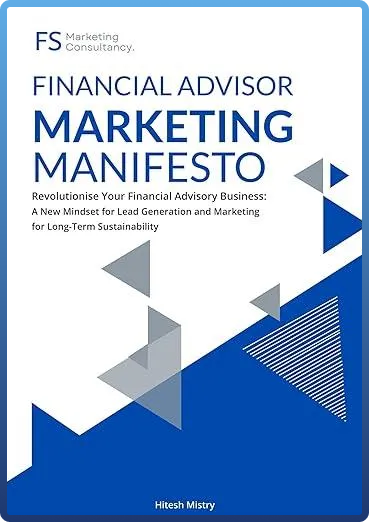We'll Install The Perfect Lead Gen System Into Your Business...
...So that you don’t need to worry where your next qualified lead is going to come from for the rest of your business life!
Speak to us about our single fee setup, no retainer offer!

Financial Services

Business to Business (B2B)
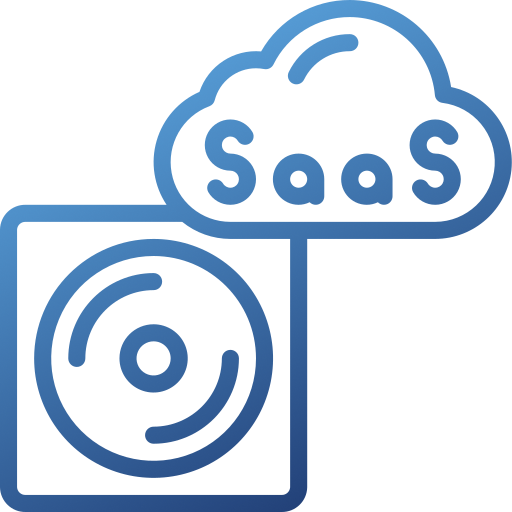
Software as a Service (SaaS)
A Lead Generation System Where Your Ideal Customers Hang Out!
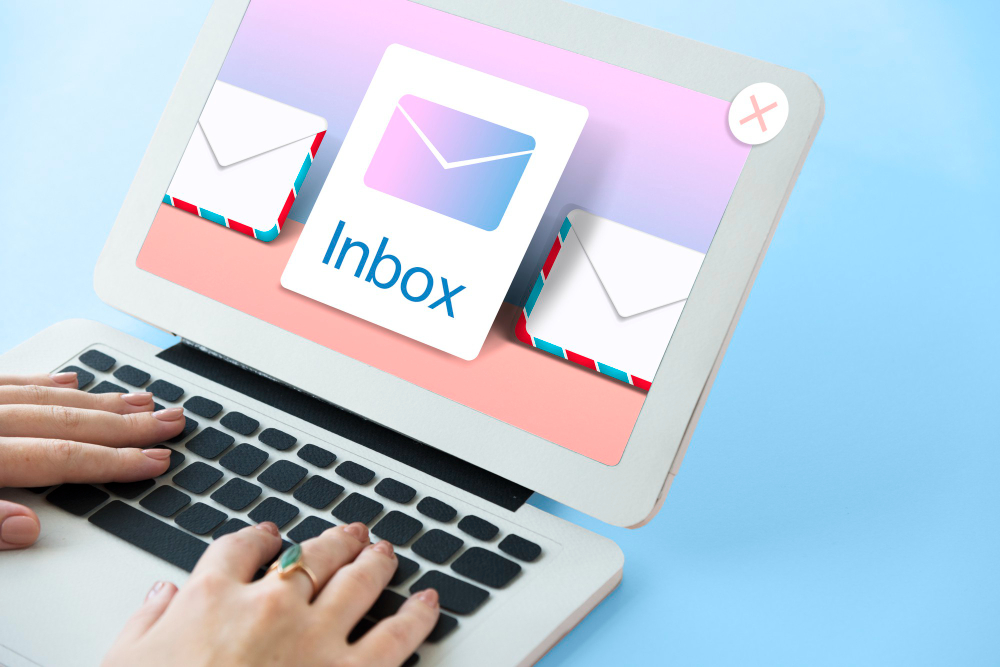
Cold Email
We'll build an automated email outreach system that will get you in front of 10k+ ideal customers every single month.

Facebook Ads
We’ll help you harness the potential of Facebook ads to generate new, highly qualified leads.

LinkedIn Ads & Outreach
We’ll help you leverage the power of LinkedIn ads to generate new, highly qualified leads and create valuable connections.

Meet Hitesh!
We'll build an automated email outreach system that will get you in front of 10k+ ideal customers every single month.
I've been fortunate to work with companies all around the world across Financial Services, B2B and SaaS generating thousands of leads, appointments and demos, helping clients grow their revenue.
Got a question about lead gen?
Book a call below or connect with me directly on LinkedIn.
What They Say About Us
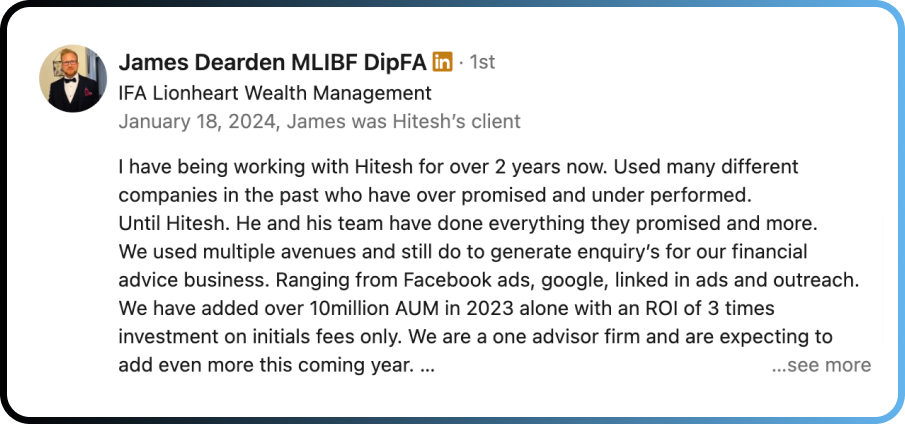
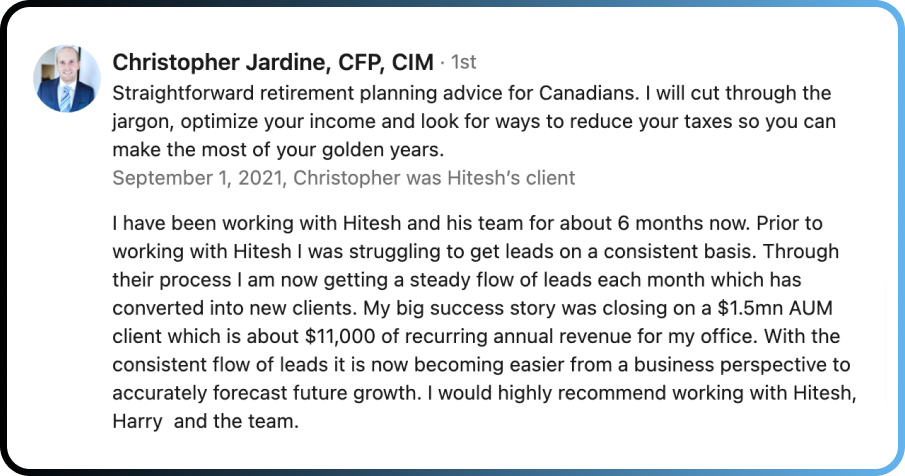
Recent Lead Generation System Results
Some example results from our Cold Email, Facebook, LinkedIn Ads & Outreach campaigns.
Our Latest Lead Gen Insights

What are the best practices of cold email outreach?
Cold email outreach can be an effective strategy for reaching out to potential customers and building connections. However, it's essential to know the best practices to maximize your success. By implementing these strategies, you can enhance your response rates and establish meaningful connections with your target audience.
Key Takeaways:
Personalize your cold emails to address the recipient's specific needs and interests.
Leverage data to identify relevant prospects and create compelling messages.
Conduct split testing to optimize your emails for better engagement and response rates.
Focus on email warm-up to build trust and credibility with your recipients.
Define your ideal customer profile (ICP) and tailor your messaging to resonate with them.
Personalisation in Cold Email Outreach
When it comes to cold email outreach, personalisation is a crucial factor that can significantly impact your success. Gone are the days of generic mass emails that go straight to the spam folder. Today, recipients expect tailored messages that address their specific needs and interests.
By personalising your cold emails, you can increase the chances of grabbing the recipient's attention and getting a positive response. It shows that you have taken the time to understand their situation and offer something of value. Personalisation creates a connection and makes your email stand out from the rest.
But how can you effectively personalise your cold emails? Here are some key strategies:
Research: Take the time to research your recipients before sending out an email. Look for information that helps you understand their business, challenges, and goals. This research will enable you to tailor your message accordingly.
Segmentation: Divide your email list into smaller, targeted segments based on common characteristics or interests. This allows you to create more specific and relevant messages for each segment.
Customization: Use dynamic fields in your emails to automatically insert personalized information such as the recipient's name, company, or industry. This small touch can go a long way in making the email feel more personal.
Address pain points: Show that you understand the recipient's pain points and offer a solution or insight that can help them. This demonstrates empathy and builds trust.
Remember, personalisation is not just about using the recipient's name in the email. It's about delivering relevant content that resonates with them on a deeper level. When done right, personalisation can dramatically improve your response rates and open doors to meaningful connections with your target audience.
Leveraging Data for Cold Email Outreach
When it comes to cold email outreach, data is your secret weapon for success. By collecting and utilizing data effectively, you can significantly enhance the impact of your campaigns and maximize your chances of getting a positive response.
One of the key benefits of leveraging data is the ability to identify the most relevant prospects for your cold email outreach. By analyzing data such as demographics, industry, and job titles, you can create targeted lists of individuals who are more likely to be interested in your offerings. This targeted approach ensures that you are reaching out to the right people, increasing the likelihood of a positive response.
In addition to targeting the right prospects, data can also help you craft compelling and personalized messages. By analyzing data on the recipient's past interactions, interests, and preferences, you can tailor your emails to resonate with their specific needs. Personalized emails that address the recipient's pain points and offer relevant solutions are more likely to grab their attention and generate a response.
Leveraging data can also help you track the effectiveness of your cold email outreach campaigns. By monitoring open rates, click-through rates, and responses, you can gain valuable insights into what works and what doesn't. This data-driven approach allows you to optimize your email content, subject lines, and call-to-action to achieve better engagement and response rates.
Benefits of leveraging data for cold email outreach:
Identify the most relevant prospects
Create personalized messages that resonate
Track the effectiveness of your campaigns
Optimize your email content for better engagement
By leveraging data effectively, you can take your cold email outreach to the next level. Embrace data-driven strategies and watch as your response rates soar.
Split Testing for Optimal Cold Email Results
When it comes to cold email outreach, split testing is a powerful tool that can help you achieve optimal results. By experimenting with different elements of your email campaigns, you can identify the most effective approaches and optimize your emails for better engagement and response rates.
What is Split Testing?
Split testing, also known as A/B testing, involves sending variations of your emails to different segments of your target audience and analyzing the results. By comparing the performance of different elements such as subject lines, email content, call-to-action buttons, or even the sender's name, you can gain valuable insights into what resonates best with your recipients.
The Benefits of Split Testing
Improved Click-Through Rates: Split testing allows you to refine your emails by identifying the elements that generate higher click-through rates. By optimizing your email content, you can encourage recipients to take the desired action.
Enhanced Conversion Rates: By determining the most effective elements in your cold emails, such as compelling subject lines or persuasive call-to-action buttons, you can increase your conversion rates and achieve your desired goals.
Optimized Engagement: Split testing helps you understand what type of content or messaging resonates best with your target audience. By tailoring your emails based on their preferences, you can foster stronger connections and encourage deeper engagement.
How to Conduct Split Tests
To conduct split tests effectively, follow these steps:
Define Your Hypothesis: Start by identifying the specific element you want to test and the outcome you expect to achieve. For example, you might want to test whether a more personalized subject line leads to higher open rates.
Create Different Variations: Develop multiple versions of your email, each with a single variable changed. This could include different subject lines, email content, or call-to-action buttons.
Split Your Audience: Divide your target audience into distinct groups and send each group a different version of your email. Ensure the sample size is large enough to draw meaningful conclusions.
Analyze the Results: Track the performance of each variation by measuring metrics such as open rates, click-through rates, and conversions. Identify the version that performs best and aligns with your goals.
Implement the Winning Variation: Once you determine the winning variation, implement it as your default email template moving forward. Continuously monitor and test new elements to further optimize your results.
By leveraging the power of split testing in your cold email outreach campaigns, you can make data-driven decisions that improve your overall email performance. Remember to track your results, implement the winning variations, and constantly refine your approach based on the insights gained from split testing.
Email Warm Up: Building Trust and Credibility
When it comes to cold email outreach, establishing trust and credibility is paramount to your success. Building a positive reputation with your recipients is crucial in increasing your chances of getting a response. This is where email warm-up comes into play.
Email warm-up is the process of gradually introducing your email account to the recipients' inboxes by sending a series of personalized and non-salesy emails. The goal is to show email service providers (ESPs) that your account is legitimate and trustworthy, ultimately improving deliverability and ensuring your emails land in the recipients' primary inbox.
To effectively warm up your email account, follow these key steps:
Start with Personalized Introductions: Begin your email campaign by sending a series of warm-up emails that are personalized and relevant to each recipient. Avoid using generic templates or making direct sales pitches at this stage. Instead, focus on establishing a genuine connection and providing value.
Gradually Increase Sending Volume: As you progress through the warm-up process, gradually increase the number of emails you send each day. This signals to ESPs that your account is gradually ramping up its activity in a natural and non-spammy way.
Vary Your Email Content: Diversify the types of emails you send during the warm-up phase. Include personal stories, helpful tips, and industry insights to engage your recipients and demonstrate your expertise. This variety will keep your emails fresh and interesting.
Monitor Engagement Metrics: Keep a close eye on your email engagement metrics, such as open rates, click-through rates, and responses. If you notice a decline in engagement, adjust your email content or sending frequency accordingly to maintain positive momentum.
Gradually Introduce Sales or Conversion-focused Emails: Once your warm-up phase is complete and you've built a solid foundation of trust, you can begin incorporating sales or conversion-focused emails into your outreach strategy. By this point, you will have established a credible reputation with ESPs and recipients.
By implementing an email warm-up strategy, you can significantly improve the deliverability and effectiveness of your cold email outreach campaigns. With a positive reputation and increased trust, recipients are more likely to engage with your emails, resulting in higher response rates and ultimately better business outcomes.
Understanding Your Ideal Customer Profile (ICP)
When it comes to cold email outreach, understanding your ideal customer profile (ICP) is paramount. By defining your ICP, you gain valuable insights into your target audience's pain points and preferences, enabling you to craft personalized messages that resonate with them.
Defining your ICP involves a thorough analysis of your existing customer base and the identification of common characteristics among your most valuable customers. Look for patterns in demographics, behavior, and needs. This process will help you create a detailed profile of your ideal customer.
Once you have a clear picture of your ICP, you can tailor your cold emails to address their specific pain points and provide solutions that meet their needs. This personalized approach enhances the effectiveness of your outreach efforts and increases the chances of getting a positive response from your target audience.
To understand your ICP better, consider conducting surveys or interviews with your current customers. Ask them about their challenges and goals, their preferred communication channels, and the types of solutions they are seeking. These insights will help you refine your messaging and ensure it aligns with your ICP's expectations.
Identifying Pain Points
Identifying your target audience's pain points is a crucial step in understanding your ICP. By knowing what challenges your ideal customers are facing, you can position your products or services as the solution they need.
Research your target audience's industry to gain insights into common pain points within that field.
Speak directly with your target audience through surveys, interviews, or social media engagements to understand their specific pain points and concerns.
Pay attention to customer feedback and reviews to identify recurring issues or challenges they face.
By actively listening to your target audience and addressing their pain points in your cold emails, you demonstrate empathy and establish credibility, increasing your chances of forging meaningful connections and conversions.
Tailoring Your Messaging
Once you have a solid understanding of your ICP and their pain points, it's time to tailor your messaging to resonate with them. Craft emails that clearly communicate how your product or service solves their challenges and improves their lives or businesses.
Use language and terminology that your ICP can relate to. Avoid using industry jargon that may confuse or alienate them.
Show empathy and understanding by acknowledging their pain points and positioning your offering as the right solution.
Highlight the unique value proposition of your product or service and how it addresses their specific needs.
By aligning your messaging with your ICP's pain points and needs, you demonstrate that you have taken the time to understand them, increasing the likelihood of a positive response and establishing a foundation for a fruitful business relationship.
Conclusion
In conclusion, implementing the best practices of cold email outreach can significantly improve your response rates and help you build meaningful connections with your target audience. By personalizing your emails, leveraging data, conducting split tests, warming up your emails, and understanding your Ideal Customer Profile (ICP), you can enhance the effectiveness of your cold email outreach efforts.
Personalization is key in cold email outreach. Tailoring your emails to address the recipient's specific needs and interests increases the chances of getting a positive response. Additionally, leveraging data allows you to identify the most relevant prospects and craft compelling messages that resonate with them.
Conducting split tests enables you to experiment with different elements of your cold emails to determine the most effective approach. By optimizing your emails for better engagement and response rates, you can continually improve your outreach results. Moreover, email warm-up plays a crucial role in building trust and credibility, establishing a positive reputation that increases your chances of success.
Understanding your Ideal Customer Profile (ICP) is essential for effective cold email outreach. Defining your ICP and identifying your target audience's pain points helps you tailor your messaging to resonate with them, ultimately driving better outcomes from your cold email campaigns. By implementing these best practices, you can achieve greater success in your cold email outreach efforts.








